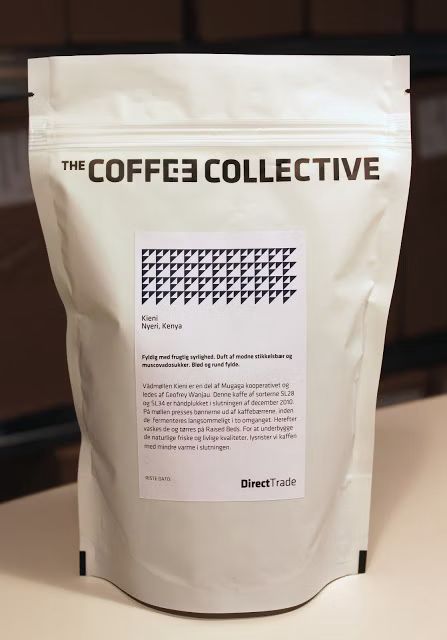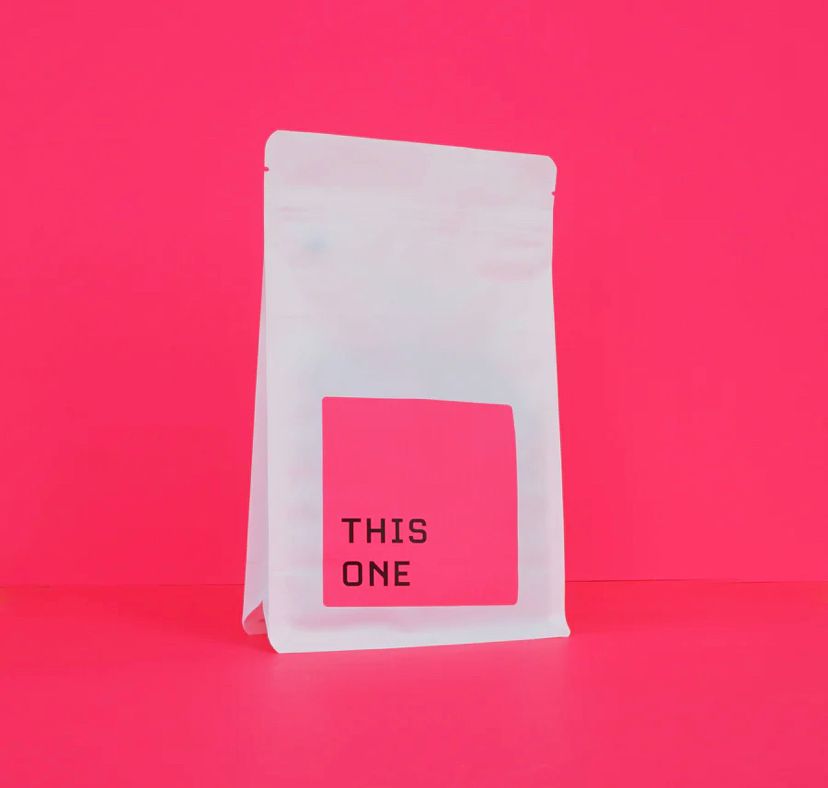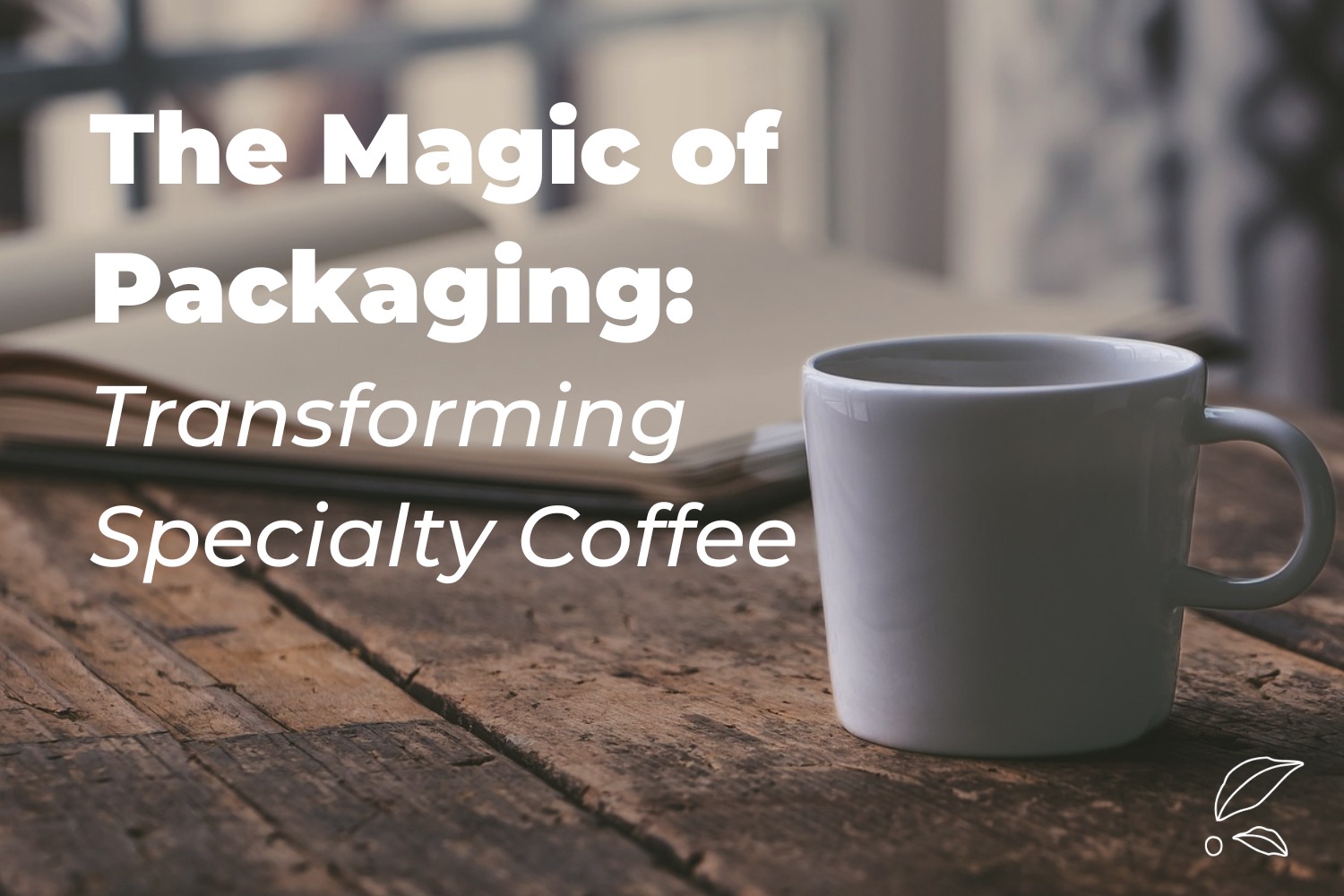Welcome to our blog dedicated to the exciting interlinking of specialty coffee and packaging design! In this space, we’ll explore the intersection between the art of coffee and the aesthetics of design, providing a comprehensive look at how packaging can highlight and elevate the specialty coffee experience.
In this blog, we’ll explore how packaging design can help tell the story of specialty coffee. We’ll dive into the creative and strategic aspects that can reflect the personality of coffee, communicate its unique origin, and attract consumers in a world full of options.
5 Relevant Considerations You Need to Keep in Mind When Designing Your Specialty Coffee Packaging
1- Attracting the Consumer
Attractive design: Specialty coffee packaging should be visually appealing to catch the consumer’s attention. Vibrant colors, harmonious combinations, captivating typography, and well-crafted graphic elements can create a positive visual impact.
Assembly Coffee innovated by representing the coffee notes on its label in a synesthetic way. This detail makes the packaging stand out from the others and arouses even greater interest on the part of consumers in the process of building the brand.

Consistent brand identity: The packaging should reflect the specialty coffee brand identity. The design should be consistent with the company’s values, mission, and personality. For example, a brand that prioritizes sustainability may opt for eco-friendly packaging materials, while a brand that seeks sophistication may use an elegant, minimalist design. Consistency between packaging design and brand identity helps create a connection with the consumer and convey trust.
Highlighting the differentials: The packaging can be designed to highlight the differentials of the specialty coffee. For example, if the coffee is grown on a family farm, the packaging can present information about the history of the producing family and the sustainable practices adopted. It is important to remember that all this information is shared by FARMly when you become a partner roaster. If the coffee has unique sensory characteristics, the design can emphasize the distinct flavor notes and arouse consumer curiosity. Highlighting the special aspects of the coffee on the packaging can create a sense of uniqueness and encourage experimentation.
Emotional appeal: Packaging design can evoke emotions in consumers, arousing their interest in specialty coffee. Visual elements such as images that refer to nature, illustrations that convey the coffee’s culture of origin, or even photographs that depict the production process can awaken the imagination and the desire to experience the special coffee. In addition, authentic and inspiring stories about coffee producers can create an emotional bond with consumers.
Innovation and originality: The packaging can stand out for its innovation and originality. A creative and unusual design can surprise consumers and arouse their curiosity. Interactive elements, such as QR codes that lead to additional content, personalized messages, or even reusable and collectible packaging, can create a unique and memorable experience. Packaging design innovation can differentiate specialty coffee in the marketplace and have a positive impact on consumer perceptions.
When attracting the consumer through packaging design, it is important to remember that the quality of the coffee must live up to the expectation created. The packaging attracts the consumer initially, but it is the quality and taste of the coffee that will ensure continued loyalty and satisfaction.
2 – Communicating the History and Origin
Contextualization of the origin: The packaging can provide relevant information about the origin of the specialty coffee, such as the country, region, farm, or cooperative of producers. In addition, details about the climate, soil, altitude, and other specific aspects can be highlighted to convey the uniqueness of the terroir and its influence on the taste of the coffee. This helps consumers understand the provenance of the coffee and appreciate its authenticity.
Producer history: The packaging can share the history and legacy of the producers behind specialty coffee. This includes information about the producing family or community, the farming tradition, the challenges faced, and the sustainable practices adopted. By sharing these stories, consumers can feel more connected to the producers and appreciate the dedicated work involved in coffee production.
Engaging photos and illustrations: Using images on the packaging is a powerful way to communicate the story and origin of specialty coffee. Pictures of the growers, the farm, the harvest, or the processing process can convey an authentic feel and capture the consumers’ attention. In addition, illustrations inspired by the culture and nature of the region can help tell the story in a visually appealing way.
Certifications and quality seals: The packaging can include information about certifications and quality seals that the specialty coffee has, such as organic, fair trade, Rainforest Alliance, UTZ, and others. These certifications and seals are indicative of sustainable practices, social responsibility, and product quality. By highlighting these credentials on the packaging, consumers can have more confidence in the provenance and positive impact of the coffee they are buying.
Social and sustainable impact: In addition to communicating the history and origin, the packaging can highlight the social and sustainable impact of specialty coffee. This includes information about programs that support local communities, education projects, environmental preservation, and sustainable farming practices, among others. Sharing these initiatives shows consumers that their choice of specialty coffee is contributing to a positive impact and making a difference.
When communicating the story and origin of specialty coffee through packaging, it is important to find a balance between the information provided and visual aesthetics. Well-designed packaging that tells an authentic and engaging story can spark curiosity, create an emotional connection, and increase the perceived value of specialty coffee.
3 – Reflection on Quality and Personality
Sophisticated and refined design: A specialty coffee package should convey a sense of sophistication and refinement, aligned with the quality of the product. This can be achieved through an elegant design, with clean lines, carefully selected typography, and well-crafted graphic elements. The choice of colors, textures, and materials also plays an important role in reflecting the high quality of the coffee.
Brand consistency: The packaging should be consistent with the personality of the specialty coffee brand. If the brand is known for its innovative and bold approach, the packaging can reflect this personality through a bold and modern design. On the other hand, if the brand is associated with a long-standing tradition and artisanal methods, the packaging may adopt a more classic and elegant style. Consistency between the packaging and the brand personality strengthens the consumer’s identity and perception.
Perceived value: The packaging of specialty coffee plays an important role in shaping the perceived value of consumers. Careful, well-crafted design can increase the perception that the coffee has a higher value than other available options. The packaging can convey a sense of exclusivity, premium quality, and care in the production process, which positively influences the consumer’s willingness to pay a higher price.
When designing the packaging of specialty coffee, it is fundamental to consider that it must convey the quality of the product in an authentic way that is consistent with the brand’s personality. A well-executed package reinforces the image of specialty coffee and creates an emotional connection with consumers, in addition to positively impacting the perception of its quality and value.
4 – Identification and Information on the Packaging
Clear and informative labels: The packaging must have clear and legible labels containing essential information about the coffee. This includes the name of the coffee, its origin, flavor profile, bean varieties, roasting process, roasting date, and other relevant information. Well-designed and organized labels make it easy to quickly identify the coffee and provide consumers with the information needed to make an informed purchasing decision.
Taking these factors into consideration, Coffee Collective informs its consumers about various details of the coffee being consumed, understanding the relevance of transparency in the marketplace. Thus, the company informs consumers on how much they paid the producer for that coffee, in what percentage the value of the coffee is higher than the market price, and how long they have been buying from the producer in question.

Barcodes and QR codes: The packaging can include barcodes or QR codes that consumers can scan for additional information about the coffee. This can include details about the producing farm, growing methods, sensory characteristics, stories of the producers, and more. This approach provides an interactive experience, allowing consumers to access more detailed information and further engage with the history and origin of the coffee.
Information about the roasting process: Many consumers are interested in the coffee roasting process and how it affects the final taste. Packaging can include information about the roasting level, such as light, medium, or dark roast, and provide a brief description of the resulting flavors and characteristics. This helps consumers choose a coffee that meets their preferences for flavor and intensity.
Preparation instructions: The packaging can provide clear and detailed instructions on how to properly prepare the specialty coffee. This can include information on the ideal grind, the ratio of coffee to water, the extraction time, and the recommended water temperature. By providing precise guidelines, the packaging helps consumers extract the best flavor and aroma from their specialty coffee, increasing their satisfaction and enhancing the drinking experience.
By making it easier for consumers to identify and find information about specialty coffee through the packaging, they feel more confident in their choice and have a more complete experience. Well-designed, informative packaging adds value to specialty coffee by providing consumers with the information they need to get the most out of it.
5- Sustainability and Eco-Friendly Materials
Sustainable packaging materials: Choosing eco-friendly packaging materials is an effective way to convey a commitment to sustainability. This includes using recyclable materials, such as paper, cardboard, or glass, that can be easily recycled after use. In addition, compostable or biodegradable packaging made from organic materials such as natural fibers, corn starch, or bioplastics is an increasingly popular option. Using these sustainable materials reduces environmental impact and demonstrates environmental responsibility to consumers.
An example of a company that is committed to sustainable processes in the coffee industry and demonstrates this concern in its packaging is Assembly Coffee. This roaster uses rice-based packaging since it is a renewable and biodegradable resource, which means that it is less harmful to the environment when discarded.

Reducing plastic use: Plastic is a commonly used packaging material, but one that causes environmental concern due to its low recycling rate and negative impact on ecosystems. To address this issue, specialty coffee packaging can be designed to minimize the use of plastic. This can be done by replacing plastic bags with paper packaging or by using recycled plastics or bioplastics. Reducing the use of plastic and opting for more sustainable alternatives is an effective way to show commitment to protecting the environment.
We Are Here, for example, has developed its coffee packaging based on Code 4 recyclable plastic, which reinforces the brand’s commitment to sustainability. In addition, the company is committed to sealing the boxes without the use of plastic tape.

Eco-friendly labels and inks: Besides the packaging material itself, choosing eco-friendly labels and inks is another important aspect. Labels made from recycled paper or compostable materials are more sustainable options. In addition, water-based inks or vegetable inks, which are less toxic and more easily biodegradable than conventional inks, can be used. These choices demonstrate additional care for sustainability in every detail of the packaging.
Messages and information about sustainability: The packaging can include messages and information about the sustainability of specialty coffee and the practices adopted by the producers. This can include details about organic farming, sustainable growing methods, environmental conservation programs, and more. Sharing this information with consumers demonstrates transparency and allows them to make an informed choice by choosing a coffee that supports sustainable practices.
Involvement in sustainability programs: The packaging of specialty coffee can highlight involvement in sustainability programs or initiatives. This includes partnerships with recognized organizations or certifications, such as Rainforest Alliance, UTZ, and Certifica Minas, among others. These partnerships demonstrate a commitment to adopting sustainable practices and meeting strict standards of environmental protection and social responsibility.
By adopting sustainable practices and using eco-friendly materials in the packaging of specialty coffee, producers and roasters demonstrate concern for the environment and align themselves with the expectations of conscientious consumers. This sustainable approach adds value to the product, strengthens the brand image, and contributes to building a more responsible and environmentally conscious coffee industry.
As we come to the end of this blog on specialty coffee and packaging design, it is clear how important it is that these two elements come together to create a unique and memorable experience for consumers. Packaging design has the power to convey the essence of specialty coffee, communicate its history, highlight its quality, and engage the senses of coffee drinkers.
It has become clear that package design is not only an aesthetic issue but also a powerful marketing and communication tool. Careful choices of colors, shapes, materials, and visual elements can awaken emotions, create emotional connections, and differentiate specialty coffee in the competitive marketplace.
Thank you for joining us on this journey and we hope we have inspired you to explore the vast potential of packaging design for your specialty coffee. Enjoy the creative process, create emotional connections, and delight consumers with the perfect combination of exceptional coffee and inspiring packaging design.





